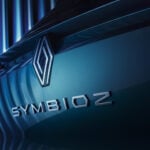800-volt technology enters the market, offering faster charging times, smaller batteries and more efficiency.
Electric cars make up only about 10 percent of the global market, but automakers and suppliers are already gearing up for the next generation of solid-state batteries, axial flow motors – and now 800-volt electrical systems that promise to reduces charging time by half, drastically reduces battery size and cost, and increases transmission efficiency.
So far, only a few cars use 800-volt systems, as opposed to the current 400-volt standard. Series production available in Europe includes Porsche Taycan, Audi e-tron GT, Hyundai Ioniq 5 and Kia EV6.
By the end of the decade, suppliers say, 800-volt architectures will be the dominant technology, especially as more and more dedicated full-power platforms appear, such as Hyundai’s E-GMP and Volkswagen Group’s PPE.
Twice as much energy
But what’s so great about 800-volt systems compared to existing 400-volt ones?
The advantages are many, experts say, stemming from simple physics that they can provide the same amount of power at a lower current. “By doubling the voltage and having the same current, you get twice as much energy in a vehicle,” said Alexander Reich, head of Vitesco’s power electronics innovation department.
The main benefit is a 50% faster charging time, given the same battery size. As a result, batteries – the most expensive component of an electric car – can be reduced and the total weight is reduced, increasing efficiency.
“You don’t need 1,000 km of range in an electric vehicle” if charging times are fast enough, Reich said.
Because higher voltages provide the same amount of power with less current, cables and wires can be made smaller and lighter, reducing the consumption of expensive and heavy copper. It also loses less power, which means better battery life and improved engine performance (helped by the lower weight). And there is less need for thermal management systems designed to ensure that the battery is operating at optimum temperatures.
And when paired with emerging silicon carbide (SiC) microchip technology, 800-volt systems can increase the efficiency of the powertrain by up to 5%. Such chips lose less switching energy and are particularly effective for regenerative braking.
Because new SiC chips use less pure silicon, costs can be reduced and more chips could be made available to the auto industry, suppliers say. (Other industries tend to use 100% silicon chips to compete with space car manufacturers at wafer factories.)
“Putting it all together, 800 volts is a big deal,” said Kesselgruber of GKN.
Parity at the gas station
But with most existing charging stations based on 400-volt systems, is there still an advantage for cars with 800-volt architectures?
Yes, experts say, but they will need an 800-volt charging infrastructure to take full advantage of it.
“Much of the existing DC fast charging infrastructure is for 400-volt vehicles,” said Husted of BorgWarner. “To enable the fastest charging that 800 volts allows, the latest generation of high-voltage, high-speed DC fast chargers will be needed.”
This is not a problem for home charging, but public high-speed charging networks are so far limited. “This is most important for public highway loaders,” Reich said. “Refilling must be as fast as refueling at a gas station.”
“This is the use case” for charging at 800 volts, he added.
In Europe, such networks include Ionity, the multi-automotive partnership (including Audi and Porsche) with 800-volt and 350-kilowatt highway charging points.
“A 350 kw charger translates into a charging time of five to seven minutes per 100 km,” said Otmar Scharrer, senior vice president of technology for the ZF’s electrified powertrain. a coffee break.
“This is really a game changer; this is something that will stimulate the acceptance of electric mobility “, he said for ANE.
Activating smaller batteries
If fast charging times mean that larger and larger batteries are no longer needed to eliminate ‘range anxiety’, what are the implications?
Of course, automakers may choose to have a faster charge with the same battery pack, but since electric vehicles are not yet at the same cost as internal combustion engines, a smaller battery may be a better choice. good, both philosophically and economically, says Scharrer of ZF.
“It doesn’t make sense” to equip a regular compact car, such as the Ioniq 5, with a very large battery, he said.
According to Scharrer, the ideal battery size for such a car would be 55 kilowatt-hours, according to the less than 58 kWh option offered by Hyundai / Kia – provided that the charging time from 5 to 80 to hundred decreases to 10 minutes.
A combination of 800-volt charging – both in the vehicle and in the infrastructure – as well as improved chips could make that a reality, he said.
“We need to ask ourselves as a society if it makes sense to use a lot of precious materials that we take out of the ground, such as lithium or cobalt, with a lot of weight and a lot of cost for just one or two long trips every quarter.” he said.
Where are all the 800 volt cars?
If 800-volt technology is so clearly superior – and so inevitable — why are almost all electric cars still based on 400-volt systems, including those from market leaders Tesla and VW?
“It’s a very reasonable question, but it’s hard to answer,” Scharrer said. The answer lies in convenience and precedent, he said.
The ordinary house uses a three-phase current of 380 volts, so the charging infrastructure already existed when car manufacturers began to launch plug-in hybrids and all-electric cars.
And the first wave of electric cars was built on components developed for plug-in hybrids, which are based on 400 volts. “When you start with plug-in hybrids, you get the high-voltage experience in your first battery-powered electric vehicles,” said Kesselgruber of GKN.
“When everyone started at 400 volts, I think the reason was that there was a level of voltage in the infrastructure everywhere,” he said. “It was available and accessible.”
He mentions Porsche, with an emphasis on performance rather than practice, as a pioneer in 800-volt systems.
“Porsche has allowed itself to rethink what we have taken from the past,” he said. “That’s the beauty of being a high-performance car manufacturer.”
It’s only a matter of time before a wave of 800-volt electric vehicles hit the market, suppliers say. There are few technical challenges, they add, but the components need to be developed and tested. Costs are an issue, but parity will come with the scale, the prospect of smaller batteries and the use of less copper, they say.
Volvo, Stellantis and GM have said that future models will use the technology. The VW Group is planning a range of vehicles on the PPE platform, including the new Macan and a station wagon based on the new A6 Avant e-tron concept.
Many Chinese carmakers have announced that they will switch to 800-volt architectures, including XPeng, Nio, Li Auto and BYD, as well as Geus-owned Lotus, which has just unveiled the upcoming Eletre SUV.
“With Taycan and e-tron GT, you have top-performing vehicles, and then you have the Ioniq 5, which is completely designed to be a family car,” said Kesselgruber. “If the two of them succeed, then every vehicle configuration can handle it.”

 Renault’s compact family SUV will be called the Symbioz -.
Renault’s compact family SUV will be called the Symbioz -. Peugeot and its new range of salt and pepper mills -.
Peugeot and its new range of salt and pepper mills -. A new Uber Eats ad is being criticized for showing a peanut allergy -.
A new Uber Eats ad is being criticized for showing a peanut allergy -. Pagani announces new track-based hypercar, known as the Huayra R Evo -.
Pagani announces new track-based hypercar, known as the Huayra R Evo -. Introducing the Oscars in the Best Casting category -.
Introducing the Oscars in the Best Casting category -.